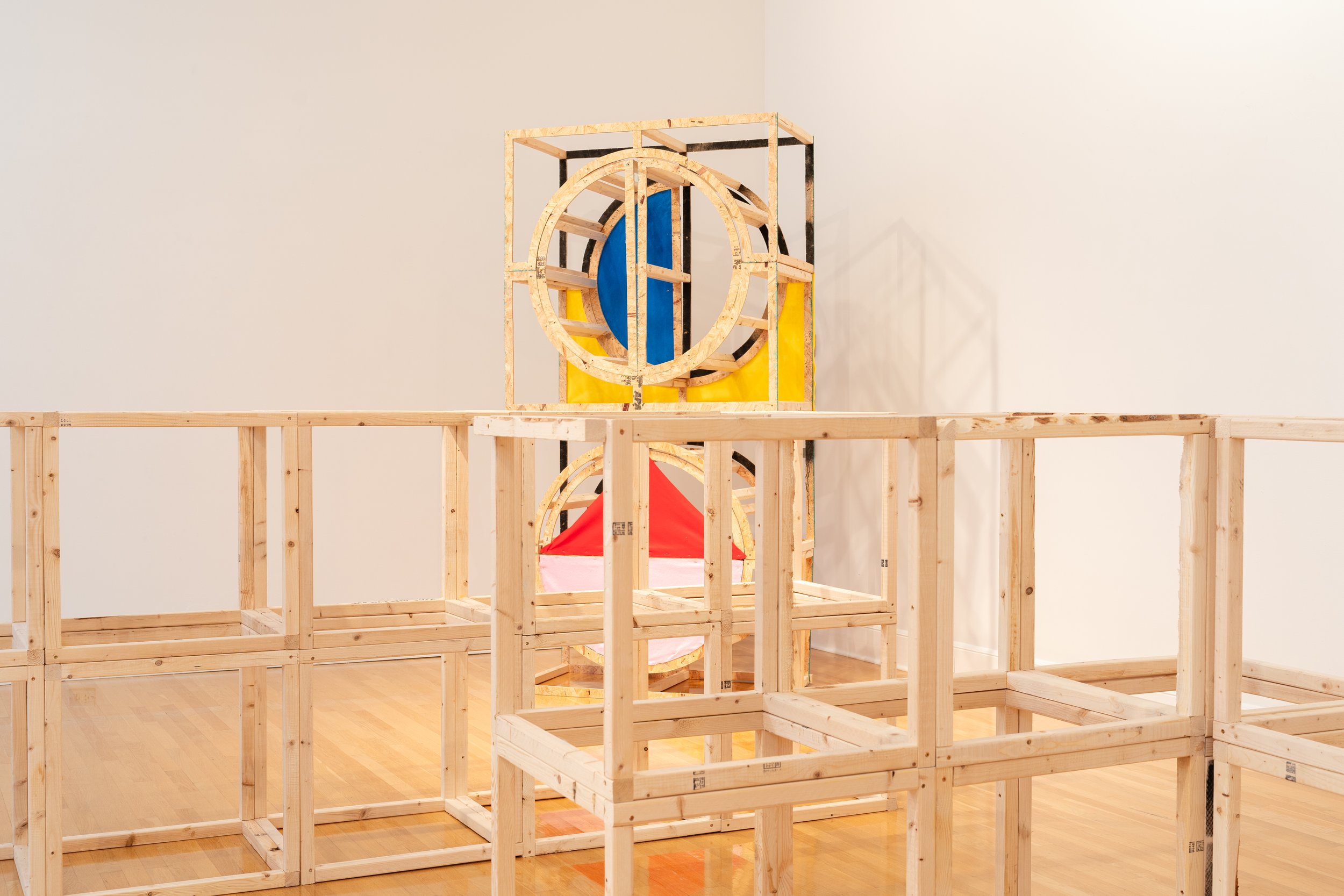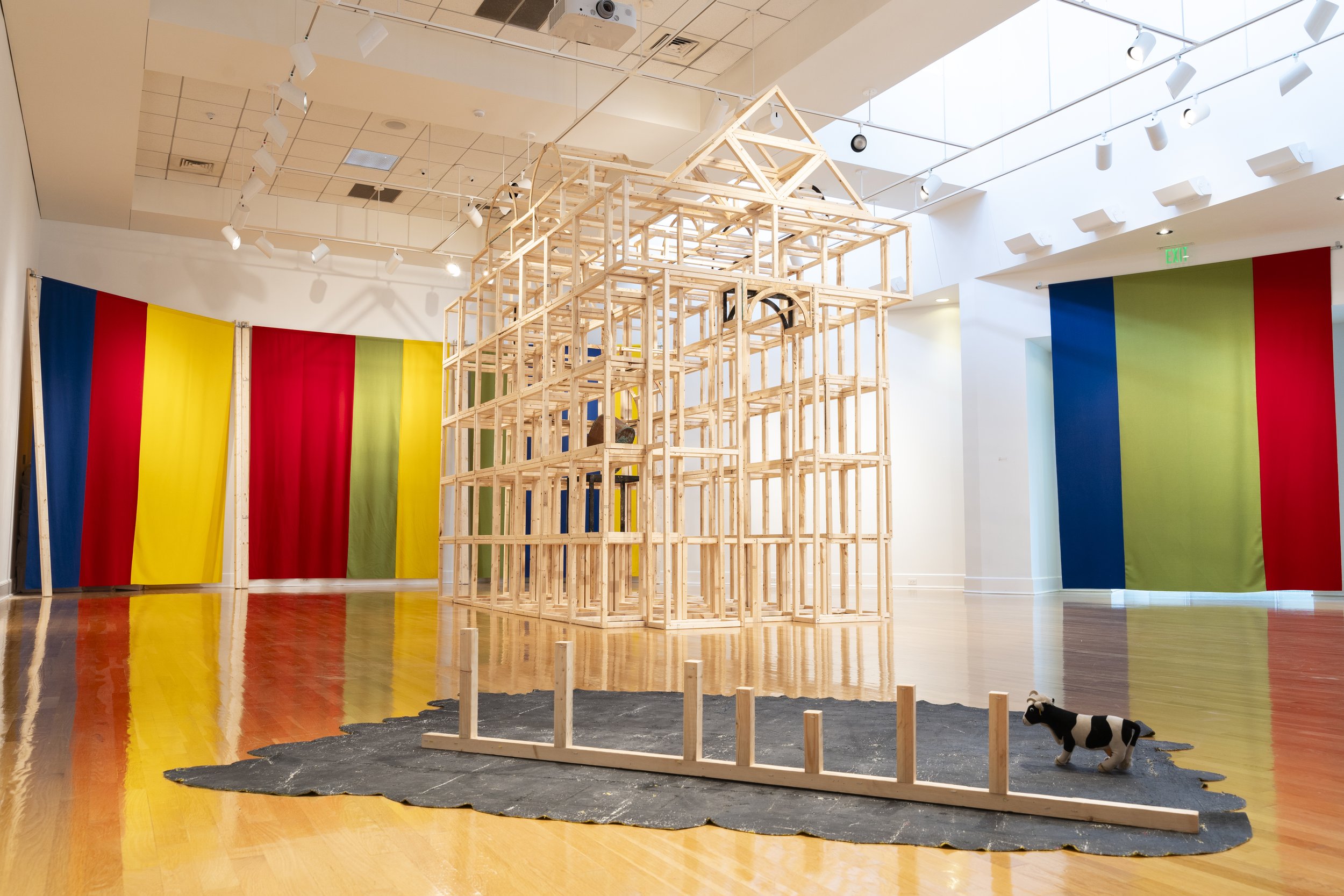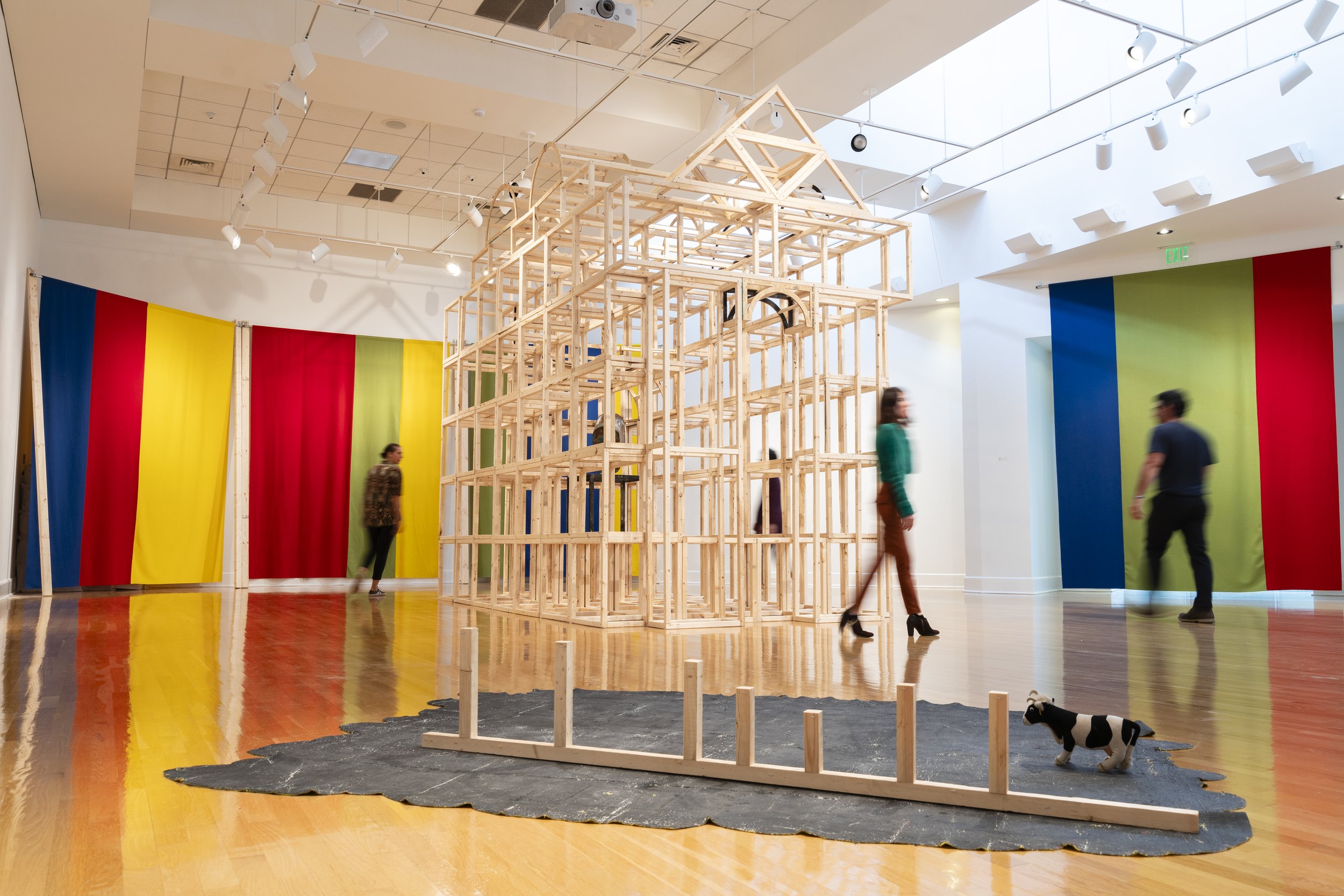Lonliness at play
*
Lonliness at play *
In Loneliness at Play, I delve into my memories, constructing and deconstructing them as a way to process and reshape myself, learning from past experiences and traumas. Playfulness becomes my method of navigating the tension between control and chaos. Through the modular elements of my work, I create a space that allows me to move forward while revisiting the past, reflecting on the inevitable highs and lows of personal growth.
Inspired by the concept of the “method of loci,” I build my own memory palace—not to faithfully preserve memories, but to create structures that help me and others navigate them more freely. This process draws from my childhood experience of building with blocks, an intuitive, almost primal method of assembling and rearranging. It’s through this playful approach that I find the freedom to explore. At the same time, creating these modules requires precise planning, strict rules, and complex procedures. This balance between rationality and intuition becomes a dialogue—one where structure enables spontaneity.
The modular nature of these elements reflects my discomfort with permanence. I’m driven to reconfigure and shift them, rejecting fixed states in favor of fluidity. The arrangements resist any definitive display, often appearing accidental, allowing for continual reinvention. Traumas and memories materialize in these abstract forms, rendered unrecognizable and open to interpretation.
This work was installed at the Schmidt Center, where I created four distinct iterations of the installation. These evolving configurations offered both myself and visitors the opportunity to experience the shifting forms and meanings that unfolded throughout the exhibition.
First iteration :
Many of the materials and methods I use in this show are deeply connected to the dynamics of childhood. The first iteration draws from those formative years, a time when impactful experiences shape us—a blend of playfulness, joy, care, and the inevitable encounters with trauma. In our innocence, we begin with a boundless sense of exploration and play, unaware of the weight of the moments that will later define us. Even after experiencing events we can’t yet fully understand, we continue to play, finding solace and meaning in the act itself.
For this iteration, I embraced that same spirit of free play. I allowed myself to engage intuitively with the elements, constructing without overthinking, letting the process guide me. To extend this sense of playfulness and openness, I invited others to participate. During the opening, I placed a pile of felt sheets at the center of the structure, encouraging visitors to interact with the work. Their gestures became part of the piece, shaping the configuration of this first stage and reinforcing the evolving nature of the installation.
Second iteration:
Chaos emerges when we deny the existence of trauma. Destruction, when approached as play, carries its own risks—its instability creates tension, unsettling everything around it. In this iteration, I meticulously constructed an environment designed to provoke doubt about its stability. The structure seems poised on the brink of collapse, yet it simultaneously evokes trust, rooted in my understanding of the materials and the time I’ve spent working with them.
This delicate balance reflects my internal process. While the structure anticipates significant change, it embodies my own impulses to confront and overcome difficult situations. It stands as a physical manifestation of resilience—a space where instability and trust coexist, mirroring the complexities of navigating trauma and transformation.
Third iteration
This stage was inspired by the concept of a fallow field—a space left to rest and renew. Painful and traumatic memories serve as fertilizer, beginning the process of cultivating a more fruitful existence. The white lights act as metaphors for ideas and breakthroughs, illuminating the potential for growth even in moments of darkness.
Everything in this stage is rooted below ground compared to the rest of the iterations—seeds, networks, roots, and the biology of renewal. It’s a moment of preparation, a time for stillness and hibernation. Mourning and chaos coexist, like a storm stirring the soil, but beneath it all, seeds are being planted. This quiet yet powerful groundwork anticipates the eventual bloom of a mental spring, where transformation begins to take shape.
Fourth iteration
The final configuration of the palace carries the essence of previous iterations, weaving together phases that reflect the passage of time. It encompasses the past, the present, and a future that extends to subsequent generations, as both the mind and the structure continuously adapt to new circumstances and spaces. The final outcome is the result of a deep connection with the materials and the space they inhabit that was only possible through extensive time and multiple iterations. The natural, wool felt panels are the only element that prevail in their original configuration as the iterations change, they represent that who does not go away - the most fundamental forces that comprise nature and the unconditioned self that witness things change, unaltered.
This process feels like revisiting the past to move forward, drawing on the methods and symbols of my childhood as tools for transformation. At its core, the work is also a reflection on the timeless act of creation—how we build, rebuild, and reshape over time, balancing memory, experience, and possibility.














































































